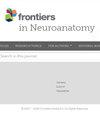Transorbital approach to the cavernous sinus: an anatomical study of the related cranial nerves
IF 2.3
4区 医学
Q1 ANATOMY & MORPHOLOGY
引用次数: 0
Abstract
BackgroundThe cavernous sinus (CS) is a demanding surgical territory, given its deep location and the involvement of multiple neurovascular structures. Subjected to recurrent discussion on the optimal surgical access, the endoscopic transorbital approach has been recently proposed as a feasible route for selected lesions in the lateral CS. Still, for this technique to safely evolve and consolidate, a comprehensive anatomical description of involved cranial nerves, dural ligaments, and arterial relations is needed.ObjectiveDetailed anatomical description of the CS, the course of III, IV, VI, and V cranial nerves, and C3-C7 segments of the carotid artery, all described from the ventrolateral endoscopic transorbital perspective.MethodsFive embalmed human cadaveric heads (10 sides) were dissected. An endoscopic transorbital approach with lateral orbital rim removal, anterior clinoidectomy, and petrosectomy was performed. The course of the upper cranial nerves was followed from their apparent origin in the brainstem, through the middle fossa or cavernous sinus, and up to their entrance to the orbit. Neuronavigation was used to follow the course of the nerves and to measure their length of surgical exposure.ResultsThe transorbital approach allowed us to visualize the lateral wall of the CS, with cranial nerves III, IV, V1-3, and VI. Anterior clinoidectomy and opening of the frontal dura and the oculomotor triangle revealed the complete course of the III nerve, an average of 37 (±2) mm in length. Opening the trigeminal pore and cutting the tentorium permitted to follow the IV nerve from its course around the cerebral peduncle up to the orbit, an average of 54 (±4) mm. Opening the infratrochlear triangle revealed the VI nerve intracavernously and under Gruber’s ligament, and the extended petrosectomy allowed us to see its cisternal portion (27 ± 6 mm). The trigeminal root was completely visible and so were its three branches (46 ± 2, 34 ± 3, and 31 ± 1 mm, respectively).ConclusionComprehensive anatomic knowledge and extensive surgical expertise are required when addressing the CS. The transorbital corridor exposes most of the cisternal and the complete cavernous course of involved cranial nerves. This anatomical article helps understanding relations of neural, vascular, and dural structures involved in the CS approach, essential to culminating the learning process of transorbital surgery.经眶进入海绵窦:相关颅神经的解剖学研究
背景由于海绵窦(CS)位于深部且涉及多个神经血管结构,因此手术难度很大。关于最佳手术入路的讨论不断,最近有人提出经眶内镜入路是治疗海绵窦外侧某些病变的可行途径。目标从腹侧内窥镜经眶视角对 CS、III、IV、VI 和 V 颅神经的走向以及颈动脉 C3-C7 段进行详细解剖描述。采用内窥镜经眶入路,进行眶外侧缘切除、前蝶骨切除和瓣膜切除术。上颅神经的走向是从脑干的明显起源开始,经过中窝或海绵窦,直至进入眼眶。结果经眶入路使我们能够看到 CS 的侧壁,以及颅神经 III、IV、V1-3 和 VI。前锁骨切除术和额硬膜及眼球运动三角区开放术显示了Ⅲ神经的完整走向,平均长度为37(±2)毫米。打开三叉神经孔并切断触角后,可以沿着Ⅳ号神经从大脑脚周围一直延伸到眼眶,平均长度为54(±4)毫米。打开虹膜下三角区后,可以看到海绵体内和格鲁伯韧带下的Ⅵ号神经,扩大的皮瓣切除术使我们可以看到其蝶骨部分(27 ± 6 mm)。三叉神经根完全可见,其三个分支也完全可见(分别为 46 ± 2 毫米、34 ± 3 毫米和 31 ± 1 毫米)。经眶走廊可暴露大部分睫状体和受累颅神经的完整海绵体走向。这篇解剖文章有助于理解 CS 手术中涉及的神经、血管和硬脑膜结构之间的关系,对于将经眶手术的学习过程推向高潮至关重要。
本文章由计算机程序翻译,如有差异,请以英文原文为准。
求助全文
约1分钟内获得全文
求助全文
来源期刊

Frontiers in Neuroanatomy
ANATOMY & MORPHOLOGY-NEUROSCIENCES
CiteScore
4.70
自引率
3.40%
发文量
122
审稿时长
>12 weeks
期刊介绍:
Frontiers in Neuroanatomy publishes rigorously peer-reviewed research revealing important aspects of the anatomical organization of all nervous systems across all species. Specialty Chief Editor Javier DeFelipe at the Cajal Institute (CSIC) is supported by an outstanding Editorial Board of international experts. This multidisciplinary open-access journal is at the forefront of disseminating and communicating scientific knowledge and impactful discoveries to researchers, academics, clinicians and the public worldwide.
 求助内容:
求助内容: 应助结果提醒方式:
应助结果提醒方式:


